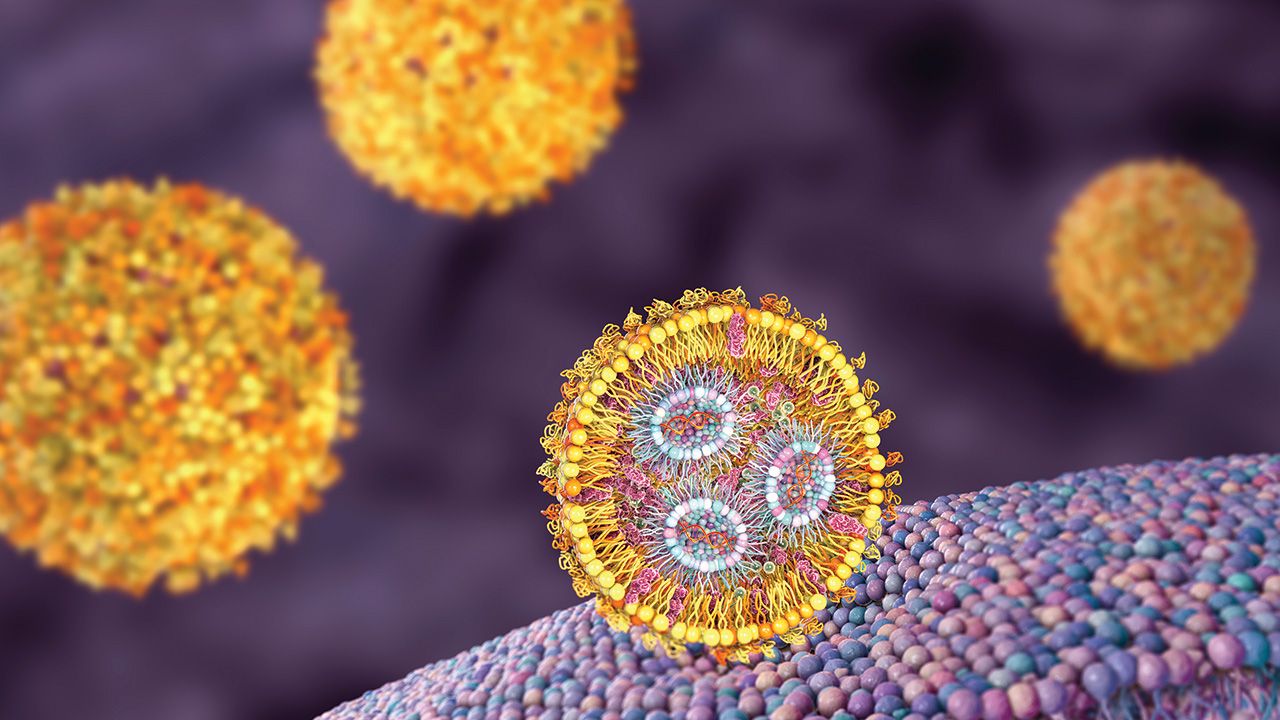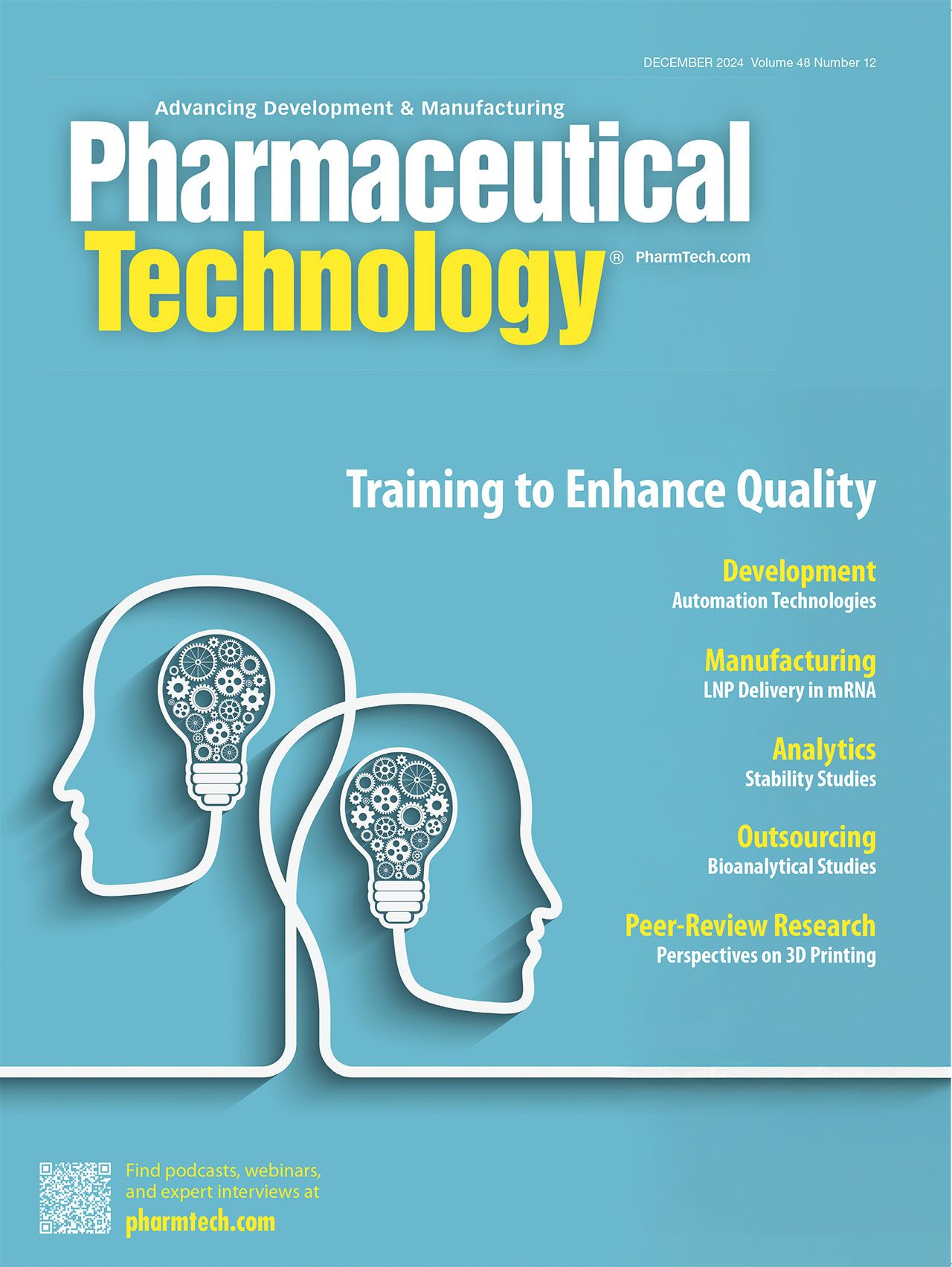Exploring Opportunities for LNP Delivery in mRNA
LNPs have gained solid ground as a drug delivery system for mRNA due to their success in the vaccines arena.
Dr_Microbe - stock.adobe.com

Lipid nanoparticles (LNPs) have been gaining traction as a primary formulation and drug delivery tool in the manufacture of messenger RNA (mRNA)-based therapeutics, having proven their utility in the development of mRNA COVID-19 vaccines. As the development of LNP-enveloped mRNA therapeutics advances, what other nanoparticle technologies offer the opportunity for optimizing the formulation of mRNA—and potentially other nucleotide-based—therapeutics? This article explores the advancement of LNP formulations as well as additional nanoparticle technologies in this space.
Manufacturing challenges
Developing an mRNA therapeutic involves both the manufacture of the mRNA molecule itself and combining that molecule into some sort of delivery technology, whether that delivery technology is a LNP or other platform, says Colin McKinlay, PhD, senior director, Chemistry and Delivery Technologies, at Nutcracker Therapeutics. One of the challenges McKinlay points out is the type of approach a developer must take in manufacturing these types of drugs, which are unique in that they are personalized therapies, where every patient, each therapy, and the drug components are basically different.
“I think one of the lessons learned from the whole COVID-19 pandemic and putting together the mRNA-based vaccines for COVID-19 was that we could actually scale these [vaccines] up to worldwide scales, and that we were able to do that fairly effectively,” said McKinlay. “But starting to think about distributing and manufacturing mRNA drugs, where every patient has a different type of formulation, I think that starts to be a different type of challenge.”
Somewhat related to the logistics of distribution, McKinlay goes on to explain that many of the challenges associated with mRNA drug manufacturing are tied into having the ability to bridge smaller-scale companies—that is, their research work—into Phase I, Phase II, clinical-trial scale, and get these companies the materials they need for conducting those trials. “There are [many] commercial suppliers that are available for research-grade mRNA and for making mRNA at that small scale when [companies] are doing [their] discovery work. And obviously, if [a company] wants to invest a large amount of money into manufacturing, there are [many] opportunities available for large-scale commercialization, but getting strategies that are suited for … small clinical-trial stage where it is not too cost prohibitive upfront is something [where] there is a definite need in the market for,” McKinlay says.
LNP lessons learned
With personal background experience in academia and moving up to a small startup and eventually to a mid-size startup, McKinlay relates the lessons learned in dealing with LNP manufacturing. “One of the things I’ve found throughout my career is that when you’re doing those initial discovery experiments and early stage experiments, you really want to be able to run high-throughput type experiments—screening different formulation chemistries, different combinations of components, or even different mRNA cargo types. However, at that small [of a] scale, [many] commercial options for making LNPs are not really tailored towards that small scale,” he explains.
In the course of his work, McKinlay noted that, although there are production systems available from various different suppliers, these systems generally have a rather large minimum volume or minimum scale at which they can operate. “What [many] people end up doing is to just pipette-mix or hand-mix their components, which means that the LNPs you’re making are very different than the LNPs you’re going to be making farther down in your development process during scale up,” he says.
One of the ways that a company can address this problem is by having its own engineering team in-house, McKinlay emphasizes. With this in-house capability, the company can have the team think about the challenges and ways to design LNPs on both a manufacturing level and at a system level. The results of the engineering team’s work can be used in research that is applied to much of the same core technologies. This gives the company the advantage of having information that can be translatable at every stage of development. “I think there are other companies that are starting to pick up on that importance,” McKinlay says, “but if you don’t think about that early on, you might end up optimizing for something that doesn’t end up being quite as good later on [and further] into your manufacturing process.”
Innovating for solutions
Looking beyond the manufacturing challenges, innovations are in development to address these hurdles. McKinlay notes that some of those innovations are just starting to kick off. “The first wave [of innovation] has [involved the use of] a lot of the existing manufacturing technologies in the biologic space for these mRNA molecules. Now, [the industry is] actually starting to get different companies that are thinking about: how do we actually pursue this workflow for an mRNA specific platform? Not just pushing ourselves across the finish line, but really trying to adapt things to the advantages of mRNA and the unique challenges associated with mRNA?” he states.
McKinlay has also observed that some of the larger mRNA companies are starting to consider the problems in the mRNA space much more deeply with an aim to innovate in this space in a more mRNA-centric way. “For instance, one of the things I brought up earlier is the personalized medicines aspect. One of the exciting things about mRNA is some of the personalized therapies and personalized vaccines [that have come out of this space],” he remarks.
With a growing number of personalized medicines coming onto the scene, the industry is now looking at unique manufacturing challenges associated with them. “I think those are areas where we’re going to continue to see different types of innovation in the field,” McKinlay adds.
Trends in the mRNA field
Broadly speaking, McKinlay considers the fact that not everybody is going in the same direction with mRNA therapeutic development an exciting trend. “There are a lot of different places that mRNA can be applied. In some cases, moving past the early stages of this field, one of the things that people are going to have to do is start specializing in different areas and saying, ‘Okay, this company is going to take mRNA in this direction.’ ‘This company is going to take it in a different direction.’ I think [this attitude] is one of the great things about a broad field like mRNA,” McKinlay says.
Vaccine development is an area where mRNA has truly demonstrated its effectiveness. But McKinlay points out the importance of not pigeonholing that platform technology such that mRNA is only thought of as a vaccine technology. Moving beyond infectious disease vaccines, or even COVID-19 vaccines, is going to be crucial to the growth of the mRNA field, McKinlay believes.
In terms of the LNP side of this field, McKinlay emphasizes that a number of LNP technologies exist that will focus on expression in the liver and that are directed towards the liver. “One of the [notions] that a lot of folks in the field are really focusing on is, ‘how do we actually direct these lipid nanoparticles to other organs in the body so that we can address other types of disease areas?’,” he says. Many companies are on this train of thought as well as researchers in academia, McKinlay explains. However, there has not been large-scale clinical successes in this area yet, he notes. “I think that’s definitely a place where more development is going to be taking place, and there’s going to be a lot of kind of handoffs between academia and industry in finding some strategies to address that,” he states.
Exploring other delivery vehicles and opportunities
In terms of non-viral RNA delivery, LNPS have largely dominated this field in terms of clinical approvals and later-stage development, according to McKinlay. However, he cautions against the industry getting stuck in these local maxima, “where the field does a lot of optimization, and [players] are able to climb in efficacy, but then [they] reach a point where there’s not too much [left] that [they] can really optimize anymore.”
Nutcracker’s exploration of alternative delivery vehicles has resulted in the company’s peptoid-based platform. According to McKinlay, these peptoids can be used in a traditional LNP-type formulation. “We’re able to branch away from traditional LNP type particles and have particles that are a little bit more unique to the chemistry of these peptoid molecules. We think that [this technology] is pushing us over, a little bit away from where the rest of the field is working; there may be a little bit more room to grow and a little bit more room to improve,” he states. McKinlay also believes that, with more and more people in the field exploring different respective local maxima, the industry as a whole can net benefit together by improving the overall safety and efficacy of the mRNA delivery vehicles that it has available to it.
Meanwhile, in academia there is also focus on using LNPs for other types of genetic cargo, such as other types of RNA or even DNA. “Beyond nucleic acids, there is also significant opportunities for using LNPs in, maybe, combination therapies, where you may have an mRNA molecule, but you also have a lipophilic, small molecule that you can incorporate into the LNP. By combining those two together, you can [potentially] see increased efficacy,” McKinlay says. “Regardless of what the future holds for mRNA therapeutics, a tight handshake between therapeutics discovery and manufacturing will be necessary for its success.”
About the author
Feliza Mirasol is the science editor for Pharmaceutical Technology.
Article details
Pharmaceutical Technology®
Vol. 48, No. 12
December 2024
Pages: 20–21
Citation
When referring to this article, please cite it Mirasol, F. Exploring Opportunities for LNP Delivery in mRNA. Pharmaceutical Technology 2024, 48 (12), 20–21.

Drug Solutions Podcast: A Closer Look at mRNA in Oncology and Vaccines
April 30th 2024In this episode fo the Drug Solutions Podcast, etherna’s vice-president of Technology and Innovation, Stefaan De Koker, discusses the merits and challenges of using mRNA as the foundation for therapeutics in oncology as well as for vaccines.